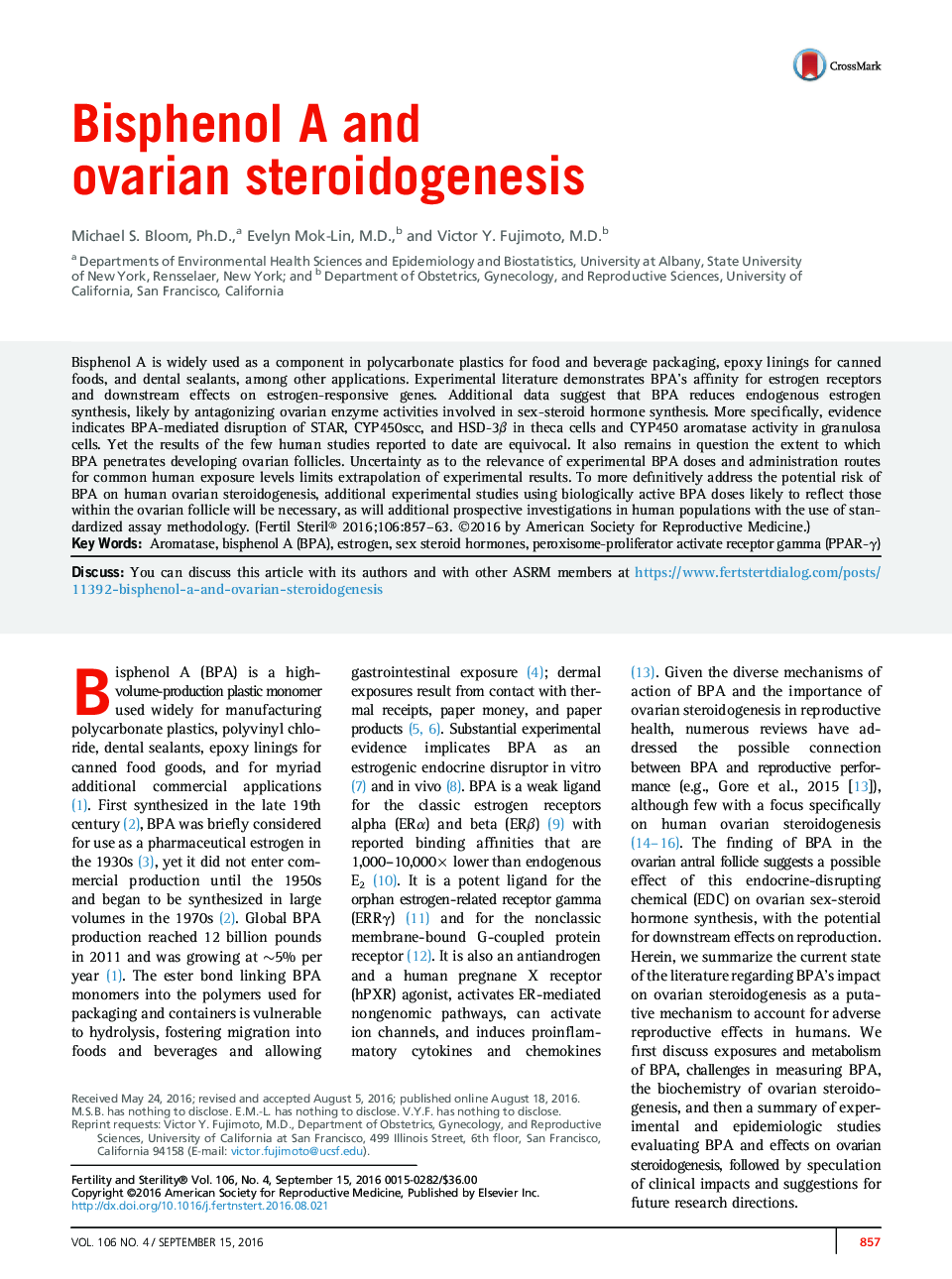| Article ID | Journal | Published Year | Pages | File Type |
|---|---|---|---|---|
| 3930219 | Fertility and Sterility | 2016 | 7 Pages |
Bisphenol A is widely used as a component in polycarbonate plastics for food and beverage packaging, epoxy linings for canned foods, and dental sealants, among other applications. Experimental literature demonstrates BPA's affinity for estrogen receptors and downstream effects on estrogen-responsive genes. Additional data suggest that BPA reduces endogenous estrogen synthesis, likely by antagonizing ovarian enzyme activities involved in sex-steroid hormone synthesis. More specifically, evidence indicates BPA-mediated disruption of STAR, CYP450scc, and HSD-3β in theca cells and CYP450 aromatase activity in granulosa cells. Yet the results of the few human studies reported to date are equivocal. It also remains in question the extent to which BPA penetrates developing ovarian follicles. Uncertainty as to the relevance of experimental BPA doses and administration routes for common human exposure levels limits extrapolation of experimental results. To more definitively address the potential risk of BPA on human ovarian steroidogenesis, additional experimental studies using biologically active BPA doses likely to reflect those within the ovarian follicle will be necessary, as will additional prospective investigations in human populations with the use of standardized assay methodology.
